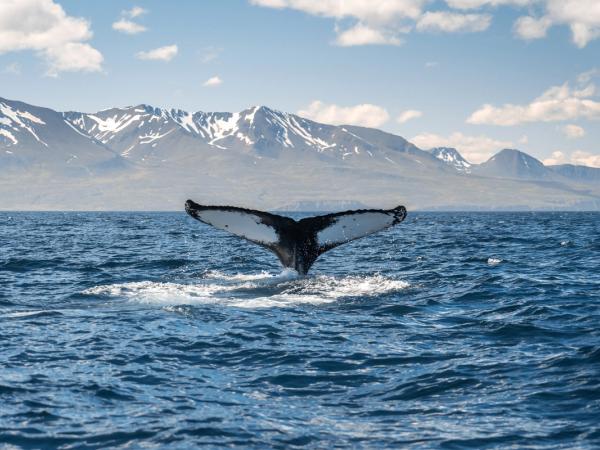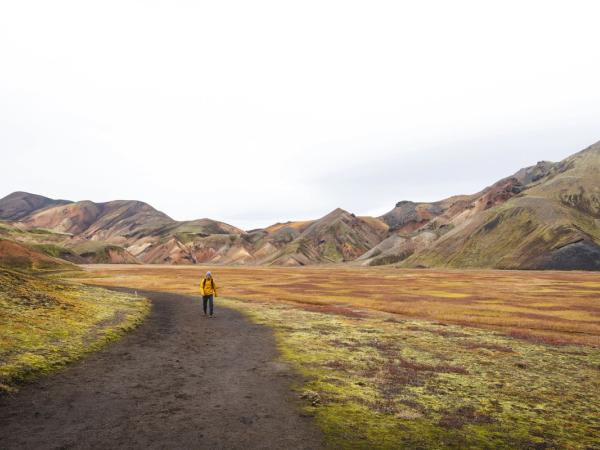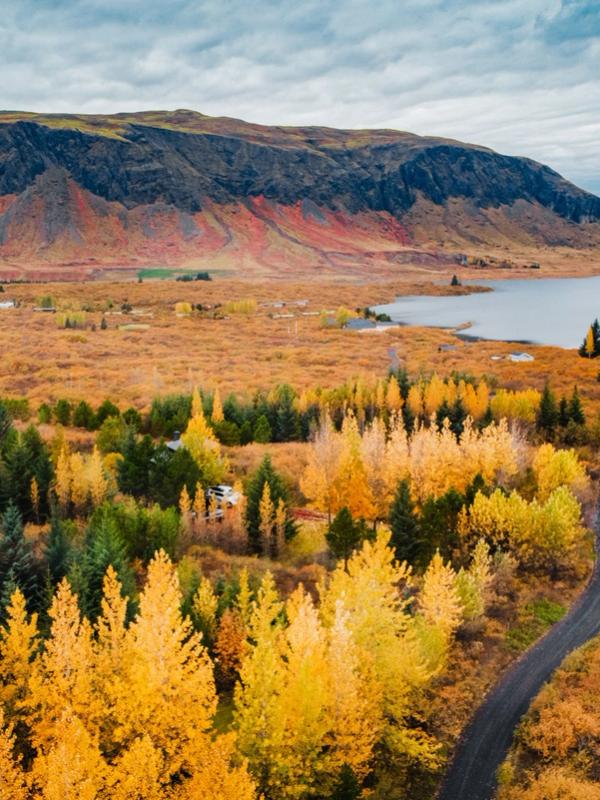
Iceland Weather in October: What to Expect in 2026
If you're planning a trip to Iceland in October, you're in for a treat. This transition month offers a mix of fall colors, fewer tourists, and the start of Northern Lights season. But Iceland's weather can be tricky, especially as winter approaches.
Here's a complete guide to help you plan your October adventure in the Land of Fire and Ice. From temperatures to packing essentials, here's what you need to know about Iceland's October weather.
Key Takeaways
- October temperatures typically range from 2°C to 7°C (36°F to 45°F), with colder conditions in the north and highlands
- Expect 11-15 rainy days during the month with precipitation averaging 77-98mm
- Daylight decreases from about 12 hours on October 1st to 8 hours by October 31st
- October marks the beginning of Northern Lights viewing season with darkening skies
- Pack waterproof layers, warm accessories, and sturdy footwear for variable conditions.
- The weather changes quickly – prepare for "four seasons in one day"
- Regional differences matter – the south is milder while the north may see early snow
Overview of the weather in Iceland in October
October in Iceland marks the shift from fall to winter. The country sits just below the Arctic Circle, where the Atlantic Ocean and Gulf Stream create a climate that's milder than you might expect for its northern location.
That said, October brings unpredictable conditions. You'll likely see a mix of clear days and wet, windy ones. It's common to experience sunshine, rain, hail, and even snow all in a single day. We often talk about having "four seasons in one day."
The Icelandic Meteorological Office tracks these patterns, and their data shows October's weather can vary quite a bit. What makes Iceland unique is how dramatically conditions can shift within short distances due to its diverse landscape.
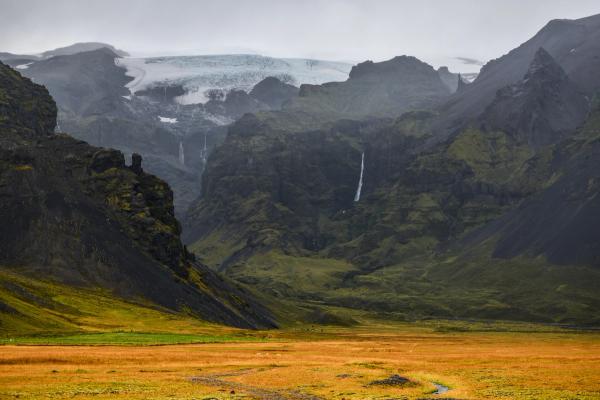
Temperature in Iceland During October
In October, average temperatures in Iceland typically range from 2°C to 7°C (36°F to 45°F). Daytime highs hover around 6°C (43°F), while nights can drop to around 1°C (34°F).
The real story is the fluctuation. Some early October days might reach 15°C (59°F), especially in the south. By late October, temperatures can drop below freezing, particularly at night and in northern regions.
Wind chill is a big factor. Iceland's average October wind speeds of 11-12 mph might not sound high, but when combined with near-freezing temperatures, it can feel much colder than the thermometer shows.
Regional differences are notable. Reykjavik and the southwest benefit from the warming effects of the Gulf Stream, keeping temperatures milder. Meanwhile, places like Akureyri in the north can be several degrees colder, often seeing early snow.
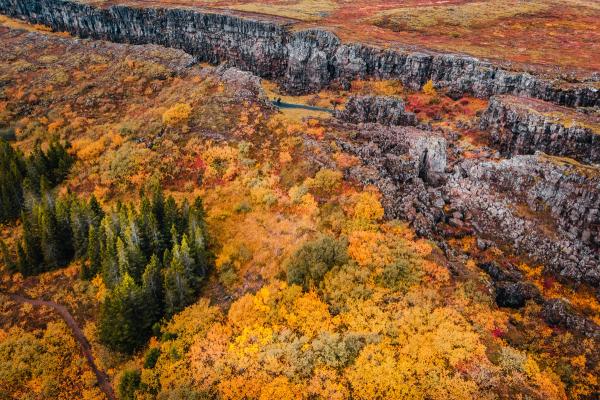
Rain & Snow during October in Iceland
October is one of Iceland's wetter months. You can expect precipitation on 11-15 days throughout the month, with rainfall averaging between 77-98mm (3-3.86 inches).
The rainfall isn't usually constant or heavy; it tends to come in bursts, with clear periods in between. This pattern allows for plenty of outdoor activities if you're prepared and flexible with your schedule.
Snowfall becomes more likely as the month progresses, especially in northern Iceland and higher elevations. While Reykjavik might see only rain or occasional wet snow that doesn't stick, areas around Akureyri can experience the first significant snowfalls of the season.
Wind is a constant companion in Iceland, particularly in exposed areas. October winds average around 11.5-12.5 mph (5-5.5 m/s), but can gust much higher during storms. These winds can make rain feel more intense and temperatures feel colder, so windproof gear is essential.
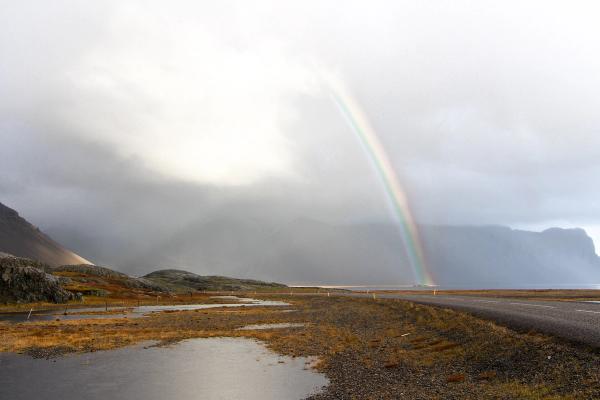
Daylight Hours and Northern Lights Opportunities
One of the most dramatic changes in October is the rapid decrease in daylight. At the beginning of the month, you'll have about 12 hours of daylight, with sunrise around 7:37 am and sunset around 6:56 pm. By October 31st, this shrinks to just 8 hours, with the sun rising at 9:08 a.m. and setting at 5:13 p.m.
This reduction in daylight means two things for travelers. First, you'll need to plan daytime activities efficiently, starting early to make the most of the available light. Second, the lengthening nights create good conditions for viewing the Northern Lights (Aurora Borealis).
October marks the beginning of the prime aurora viewing season. With darker skies but typically milder temperatures than winter months, it offers a comfortable balance for night sky watching. The best viewing conditions occur on clear nights away from city lights, between 9 pm and 1 am.
Keep in mind that aurora activity depends on solar conditions, not just darkness. Check the aurora forecast from the Icelandic Meteorological Office during your visit for the best chances of seeing this natural display.
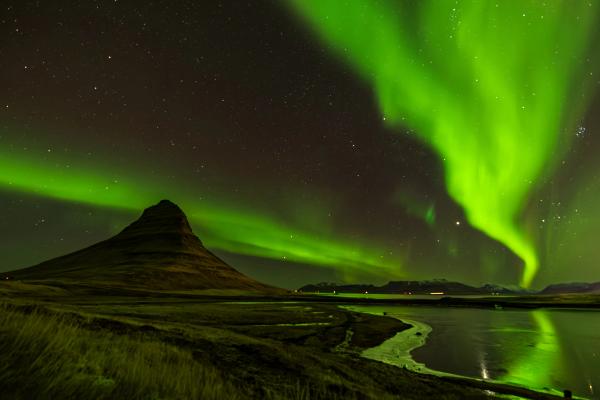
Weather by Region in October
Despite being a relatively small country, weather patterns vary significantly from region to region.
Reykjavik and Southwest Iceland
The capital region has some of the mildest temperatures on the island, typically ranging from 3°C to 7°C (37°F to 45°F). The moderating influence of the Atlantic Ocean and Gulf Stream keeps extreme cold at bay, though rainfall is frequent.
Reykjavik sees around 15 rainy days in October, but these showers often alternate with clear periods. Snow is possible but uncommon until late in the month. The city's proximity to Keflavík International Airport makes it an easy starting point for your Iceland trip, with relatively predictable weather conditions.
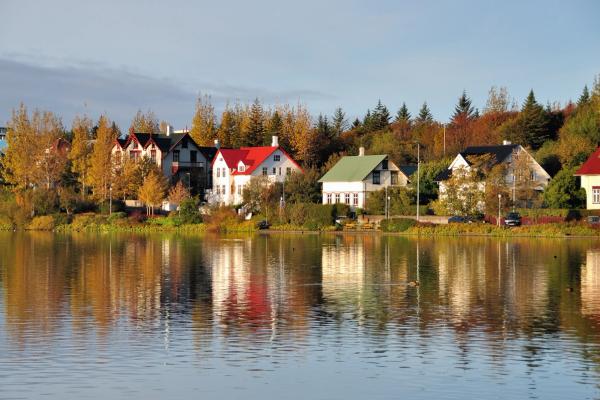
North Iceland and Akureyri
North Iceland, including Akureyri, experiences noticeably colder October conditions than the south. Average temperatures range from 0°C to 5°C (32°F to 41°F), with greater chances of early snowfall.
The north typically sees less rainfall than the south but more snow, especially in the latter half of October. This creates beautiful autumn-to-winter landscapes but requires more winter-appropriate gear and possibly winter tires if you're driving. The upside is that clearer skies can provide excellent Northern Lights viewing opportunities.
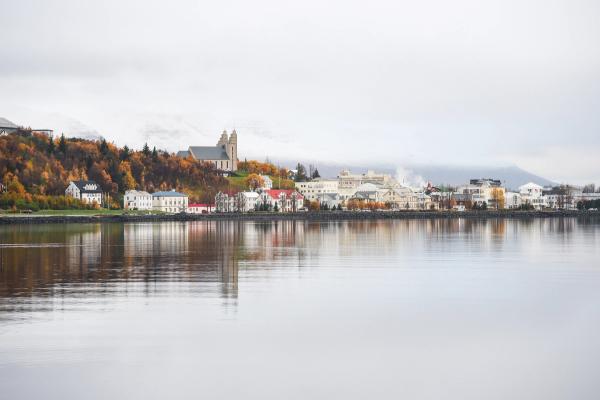
South Coast and Jökulsárlón Glacier Lagoon
The South Coast offers diverse weather conditions in October. Temperatures generally range from 2°C to 6°C (36°F to 43°F), with frequent rainfall but less snow than northern regions.
The famous Jökulsárlón Glacier Lagoon is particularly affected by the variable weather in October. The icebergs against autumn colors create great photo opportunities, but conditions can change rapidly. Expect wind, rain, and occasional sunny breaks. The proximity to Vatnajökull Glacier influences local weather patterns, sometimes creating microclimates that differ from general forecasts.

East Iceland
East Iceland experiences a mix of conditions in October, often slightly drier than the south but colder than the southwest. Early snow is possible, particularly in higher elevations, and winds can be strong along the eastern fjords.
The east offers stunning autumn foliage in early October, with mountain slopes showing vibrant colors before winter takes hold. By late October, snow begins to accumulate in the highlands and mountains, creating a contrast with the dark fjords.
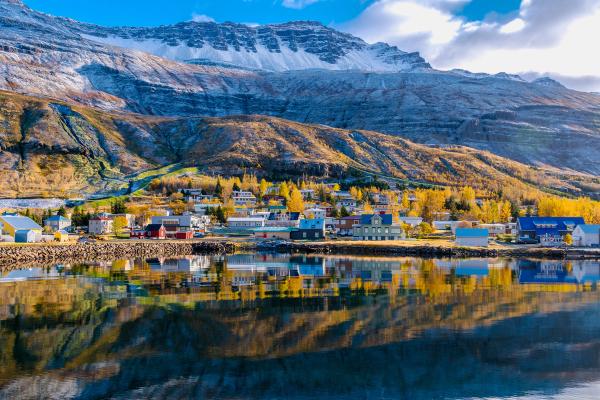
Icelandic Highlands and Ring Road Conditions
The Icelandic Highlands become increasingly hard to access in October. Many highland roads (F-roads) close during this month as snow and ice make them impassable. Temperatures in the highlands can drop well below freezing, especially at night.
The Ring Road (Route 1) generally remains open throughout October, but conditions vary significantly along its 1,332 km length. The northern and eastern sections may experience early winter conditions with snow and ice, while the southern portions typically remain snow-free until later in the season. Always check road conditions through the Icelandic Road Administration before traveling, especially for highland routes or mountain passes.
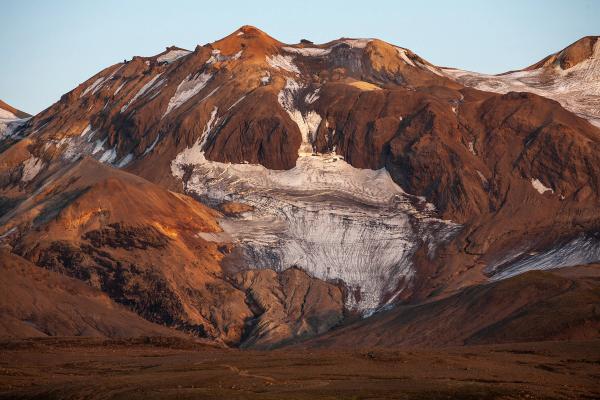
October 2025 Weather Forecast
Data from October 2025 showed a mix of weather across Iceland. The month started warm but ended cold, with record snowfall in Reykjavík and freezing temperatures in the north. Overall, temperatures were close to normal, but a bit lower than average in most places. Reykjavík averaged 4.7°C (40.5°F), and Akureyri averaged 3.4°C (38.1°F).
Rain was much heavier than usual in the southwest, where Reykjavík got about 150 mm, almost twice the normal amount. The north and east were drier — Akureyri saw 46 mm, about 60% of average. Winds were mostly lighter than usual, though there were a few short, strong storms near the end of the month.
There was less sunshine than normal in Reykjavík, with 70 hours, but more than usual in Akureyri, with around 61 hours.
These trends suggest October 2026 could bring another month of changeable weather: some mild days, some cold snaps, and chances of heavy rain or snow. As always in Iceland, it’s best to be ready for anything.
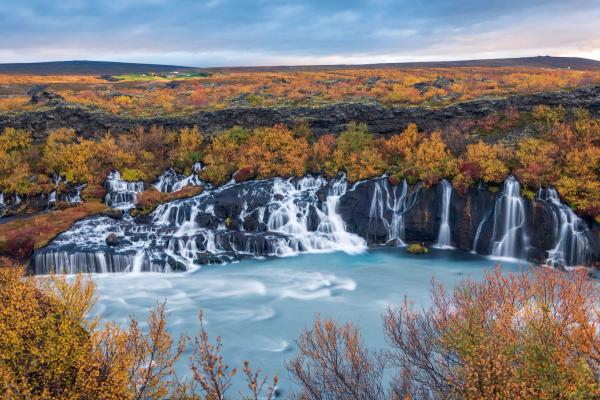
What to Pack for Iceland in October
Packing for Iceland in October requires careful consideration of the variable weather. Here's what to bring:
- Waterproof and windproof jacket (essential)
- Waterproof pants (for hiking and outdoor activities)
- Warm layers (thermal base layers, fleece mid-layers)
- Warm sweater (wool or synthetic)
- Sturdy, waterproof hiking boots with a good grip
- Warm hat, gloves, and scarf
- Thick socks (wool or thermal)
- Swimwear (for hot springs and pools)
- Camera with extra batteries (cold drains batteries faster)
- Headlamp or flashlight (for increasing darkness and Northern Lights viewing)
- Hand/foot warmers (for extended outdoor activities)
- Microfiber towel (for impromptu hot spring visits)
- Thermos (for keeping drinks warm during day trips)
The key is layering. This allows you to adjust to changing conditions throughout the day, adding or removing layers as needed.

Best Activities for Iceland's October Weather
Despite the variable weather, October offers plenty of activities suited to the season:
- Northern Lights hunting (darker skies make this a prime time)
- Exploring the Golden Circle (Thingvellir National Park, Geysir, and Gullfoss)
- Driving the Ring Road (with proper preparation and vehicle)
- Whale watching (tours operate through October)
- Visiting museums and galleries in Reykjavik (perfect for rainy days)
- Relaxing in hot springs and pools (even better in cool weather)
- Exploring ice caves (early season tours begin in late October)
- Hiking on marked trails (stick to accessible routes as the Highlands close)
- Photographing autumn foliage mixed with early snow
- Attending cultural events (October has several festivals)
- Visiting Jökulsárlón Glacier Lagoon (less crowded than summer)
The key to enjoying activities in October is flexibility. Have indoor backup plans for outdoor activities, and be prepared to adjust your schedule according to daily weather conditions.
Conclusion
October in Iceland offers a unique travel experience. The changing seasons bring challenges, but also rewards: fewer crowds, opportunities to see the Northern Lights, and dramatic landscapes transitioning from fall to winter.
Keep an eye on the forecasts from the Icelandic Meteorological Office during your trip, but remember that Iceland's weather can change quickly. The rain shower you see approaching might soon give way to a rainbow or clear skies perfect for Northern Lights viewing.



